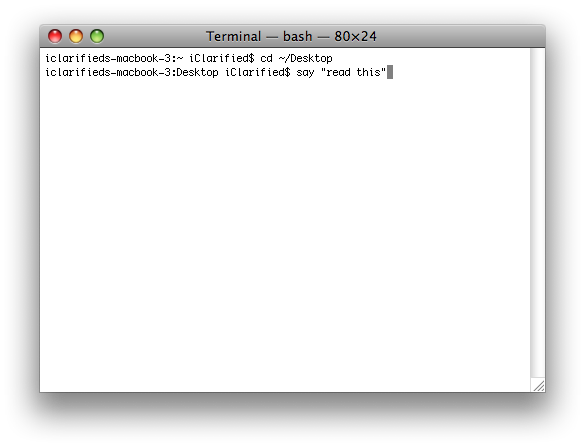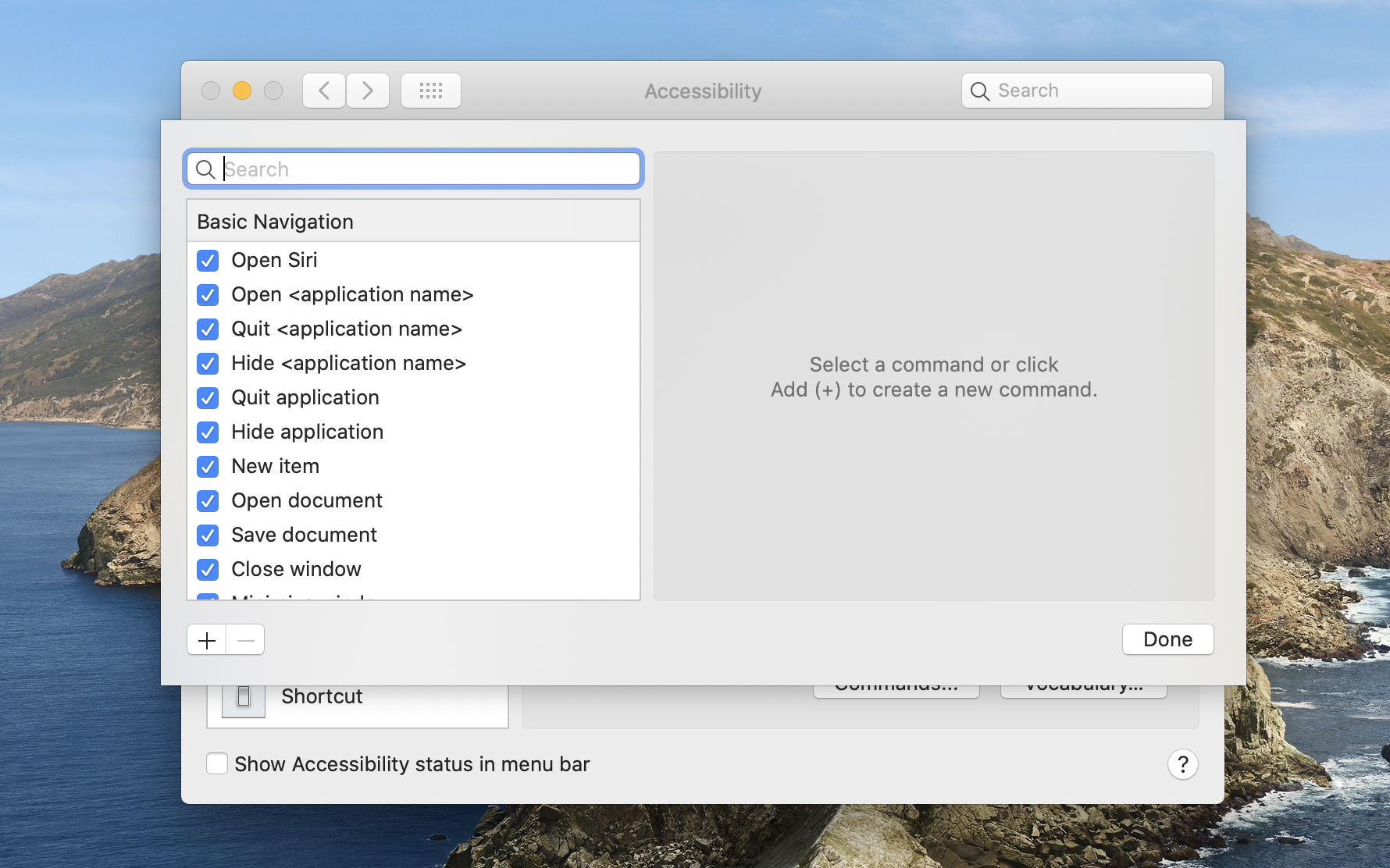
- MAC VOICE COMMAND TUTORIAL HOW TO
- MAC VOICE COMMAND TUTORIAL 32 BIT
- MAC VOICE COMMAND TUTORIAL CODE
- MAC VOICE COMMAND TUTORIAL FREE
- MAC VOICE COMMAND TUTORIAL WINDOWS
stream, new SpeechAudioFormatInfo ( EncodingFormat. speechEngine.SetInputToAudioStream( this. stream = new Energ圜alculatingPassThroughStream (kinectStream) //take the kinect audio as the input stream Var kinectStream = audioSource.Start() //start the kinect audio (has to be done in the above order first) Adaptive //set the beam to adapt to the surrounding kinectSensor.AudioSource //set the audio source to be the kinect audioĪudioSource.BeamAngleMode = BeamAngleMode. CancellationAndSuppression //do echo and noise cancellation to allow for better sound Private void enableEchoCancellation( object sender)
MAC VOICE COMMAND TUTORIAL 32 BIT
InstalledRecognizers().Where(matchingFunc).FirstOrDefault() //uses the 32 bit sound dll file or it wont work used for matching speech to engine CurrentCulture) // set to US need to find GB one there is also a japanese one R.AdditionalInfo.TryGetValue( “Kinect”, out value) If (e.Result.Confidence matchingFunc = r => Private void speechRecognized( object sender, SpeechRecognizedEventArgs e) But it can also be used to change internal values and other stuff in your program.

Currently it assigns an output to a string and prints the string. Now for the more interesting bit what to do if the speech is recognised. WriteLine( “Hypothesized” + e.Result.Text + ” “ + e.Result.Confidence) Private void speechHypothesized( object sender, SpeechHypothesizedEventArgs e)Ĭonsole. Private void speechRecognitionRejected( object sender, SpeechRecognitionRejectedEventArgs e) WriteLine( “Hypothesized: “ + e.Result.Text + ” “ + e.Result.Confidence) Private void speechRecognitionRejection( object sender, SpeechHypothesizedEventArgs e) //hypothisise the sound if to low a chance rejectĬonsole. Empty : result.Text + ” “ + result.Confidence) //if the sound wasn’t recognised reject Private void RejectSpeech( RecognitionResult result) The next few functions decide on how close what it thinks the sound was to what is in the builder, it then decides to reject speech if its not accurate enough. speechRecognitionRejected //reject words that are wrong to choices speechHypothesized //hypothisise aqnd check for accuracy speechRecognized //check to see if speech is recognized Sre.LoadGrammar(g) //load the choices to check against Var g = new Grammar (grammerBuilder) //create gramer from choices GrammerBuilder.Append(Choices) // add the choices for the kinect to check said words against Public Energ圜alculatingPassThroughStream( Stream stream) // find the energy from the device and pass it into the stream Private readonly object syncRoot = new object () Private readonly double energy = new double Private class Energ圜alculatingPassThroughStream : Stream // class used to convert energy from microphone into speech This can be found in the microsoft kinect SDK. The first thing to do is to calculate any energy that passes over the kinect and convert it into sound.

Private string voiceInput // used to print to the console results of what you have said SpeechRecognitionEngine speechEngine //used to understand speech
MAC VOICE COMMAND TUTORIAL CODE
The code below is standard stuff for setting up the kinect sensor. Using System.IO //required to input the streamįirst off some variables we need to set up the kinect and to store the speech variables. Using // needed for speech recognition engine The final bit of preparation is to ensure we use all the necessary libraries. The speech reference I had to browse for it should be found inĬ:->programFiles(x86)->MicrosoftSDKs->Speech->V11.0->AssemblyĬlick the dll and OK and it should be added


The Kinect reference should be easy to find under the. Right click on the references and click add reference. You then have to add the references for the Kinect and the speech dll.
MAC VOICE COMMAND TUTORIAL WINDOWS
Then click on the dropdown box that says windows application and change it to console application. This is done by right clicking on the name of the project and selecting properties. The first thing to do is to set your application up to be a console application.
MAC VOICE COMMAND TUTORIAL HOW TO
Thought I would put together a quick tutorial on how to get voice commands working with the Kinect.
MAC VOICE COMMAND TUTORIAL FREE
If it doesn’t work as I have missed something out or you have any problems, comments or suggestions feel free to let me know. I am going to put the code up so it can hopefully be used easily by others. I have created a simple program that runs on my computer and Kinect without a hitch. This is my first tutorial and I’m new to this blogging world.


 0 kommentar(er)
0 kommentar(er)
